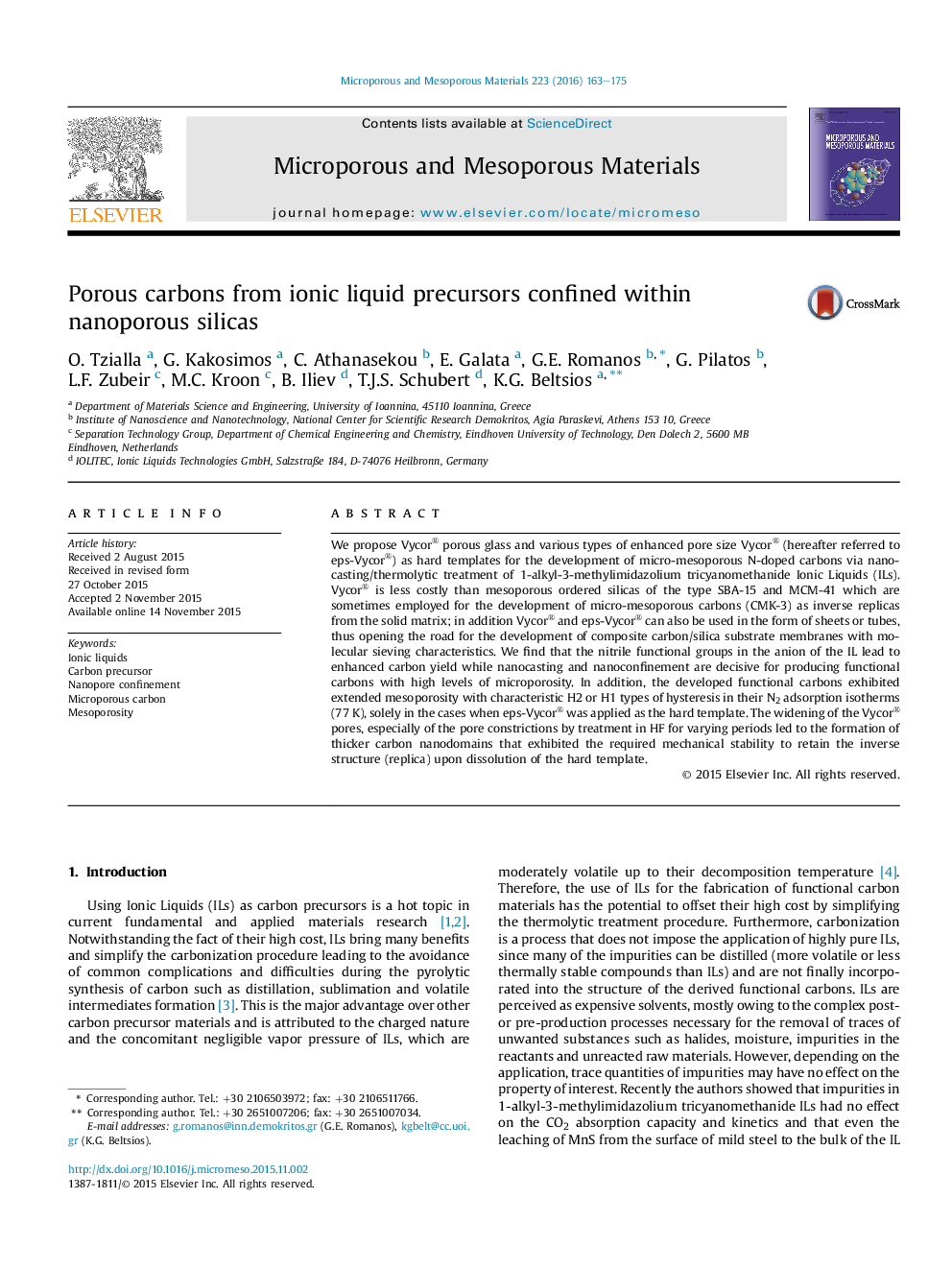| کد مقاله | کد نشریه | سال انتشار | مقاله انگلیسی | نسخه تمام متن |
|---|---|---|---|---|
| 72290 | 49016 | 2016 | 13 صفحه PDF | دانلود رایگان |
• We achieved widening of the pore constrictions in Vycor® via controlled HF etching.
• We show that Vycor® is a good choice template for Ionic Liquid (IL) nanocasting.
• Proposed are tricyanomethanide anion ILs as efficient carbon precursors.
• Nanocasting of ILs and pyrolysis produces micro–mesoporous N-doped carbons.
• The BET surface area of derived carbons was above 1000 m2/g.
We propose Vycor® porous glass and various types of enhanced pore size Vycor® (hereafter referred to eps-Vycor®) as hard templates for the development of micro-mesoporous N-doped carbons via nanocasting/thermolytic treatment of 1-alkyl-3-methylimidazolium tricyanomethanide Ionic Liquids (ILs). Vycor® is less costly than mesoporous ordered silicas of the type SBA-15 and MCM-41 which are sometimes employed for the development of micro-mesoporous carbons (CMK-3) as inverse replicas from the solid matrix; in addition Vycor® and eps-Vycor® can also be used in the form of sheets or tubes, thus opening the road for the development of composite carbon/silica substrate membranes with molecular sieving characteristics. We find that the nitrile functional groups in the anion of the IL lead to enhanced carbon yield while nanocasting and nanoconfinement are decisive for producing functional carbons with high levels of microporosity. In addition, the developed functional carbons exhibited extended mesoporosity with characteristic H2 or H1 types of hysteresis in their N2 adsorption isotherms (77 K), solely in the cases when eps-Vycor® was applied as the hard template. The widening of the Vycor® pores, especially of the pore constrictions by treatment in HF for varying periods led to the formation of thicker carbon nanodomains that exhibited the required mechanical stability to retain the inverse structure (replica) upon dissolution of the hard template.
Figure optionsDownload as PowerPoint slide
Journal: Microporous and Mesoporous Materials - Volume 223, 15 March 2016, Pages 163–175
